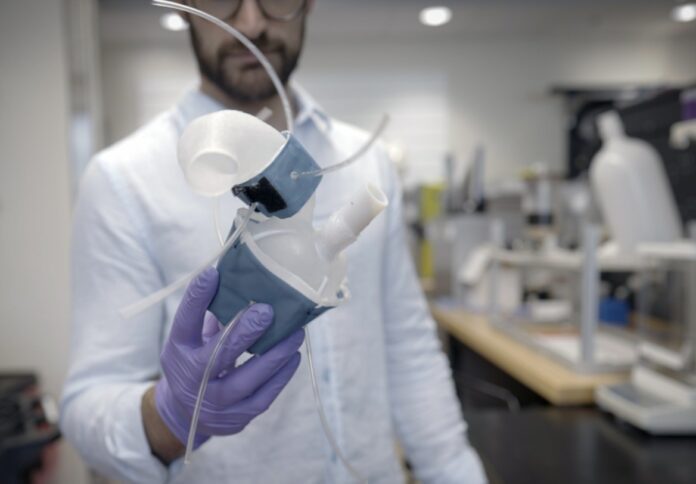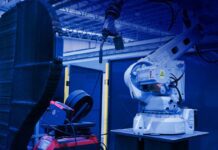
Engineers at the Massachusetts Institute of Technology have devised a method for 3D printing a soft and flexible replica of a patient’s heart in the hopes of helping doctors tailor treatments to patients’ specific heart form and function.
As explained by MIT, the procedure begins with the researchers converting medical images of a patient’s heart into a three-dimensional computer model, which they then 3D-print with a polymer-based ink.
The result is a soft, flexible shell that is precisely the shape of the patient’s own heart.
This method can also be used to print a patient’s aorta, which is a major artery that transports blood from the heart to the rest of the body.
To mimic the heart’s pumping action, the team has developed sleeves that resemble blood pressure cuffs and wrap around a printed heart and aorta with the inside of each sleeve having a bubble wrap-like design.
When the sleeve is connected to a pneumatic system, researchers may control the outflowing air to rhythmically expand the bubbles in the sleeve and constrict the heart, replicating the pumping motion of the heart.
The researchers can also enclose a printed aorta in a separate sleeve that is inflated to tighten the vessel.
They claim that this restriction can be adjusted to resemble aortic stenosis, a condition in which the aortic valve narrows and the heart must pump blood more forcefully.
“All hearts are different,” says Luca Rosalia, a graduate student in the MIT-Harvard Program in Health Sciences and Technology.
“There are massive variations, especially when patients are sick. The advantage of our system is that we can recreate not just the form of a patient’s heart, but also its function in both physiology and disease,” Rosalia explained.
The study, which was supported, in part, by the National Science Foundation, the National Institutes of Health, and the National Heart Lung Blood Institute, was published in Science Robotics.




















